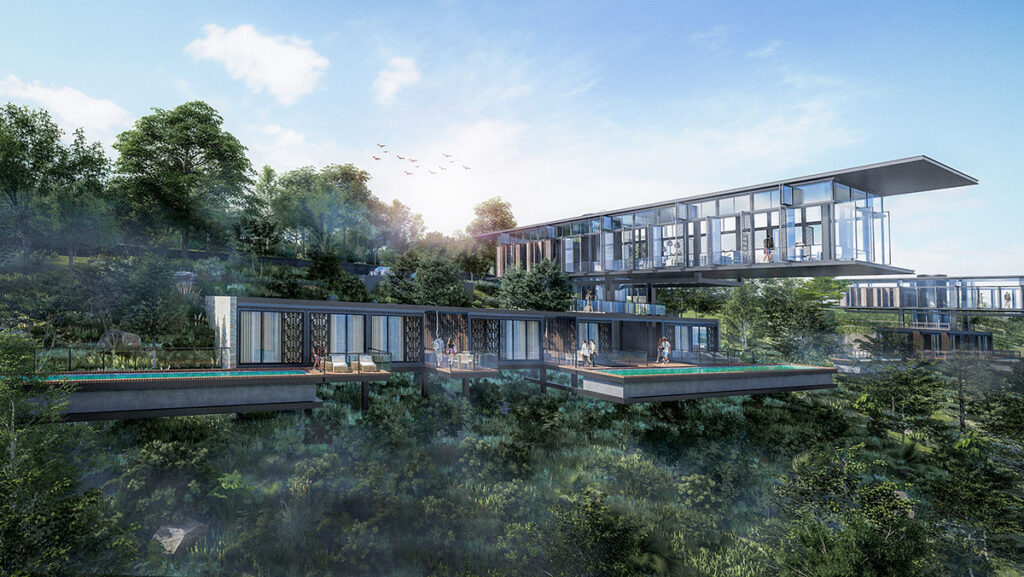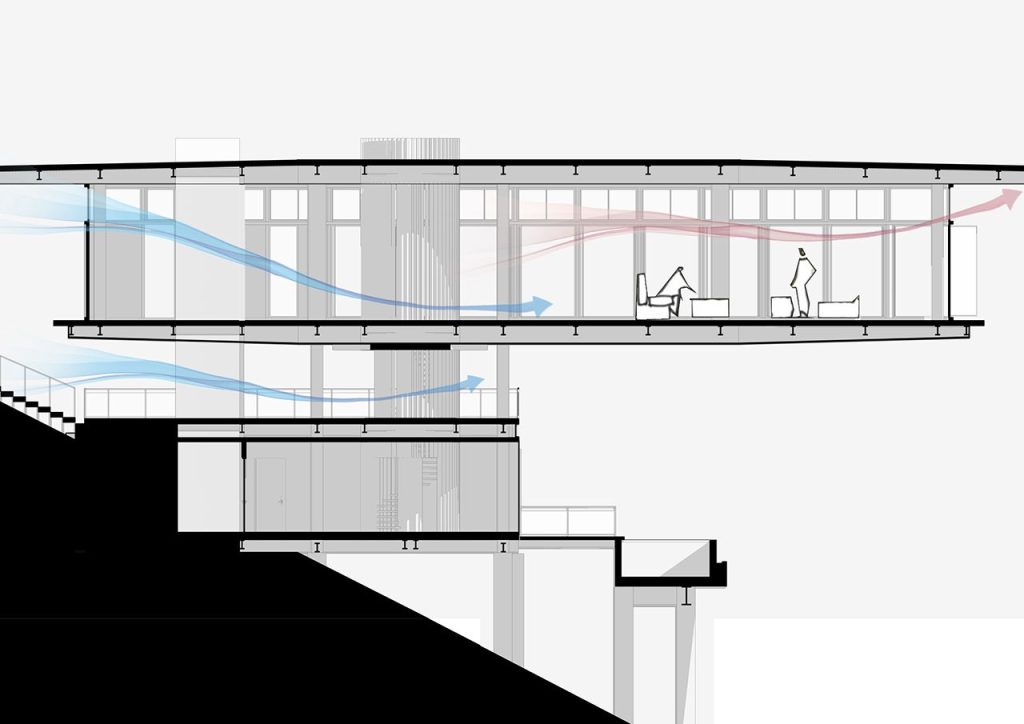Our architects envisaged fresh tropical modernism for the villas at r+ koh rong. As with the construction of any hospitality establishment, there will be countless architectural problems to tackle - from structural aspects such as building integrity and floorplans, to environmental preservation and guest experiences - there are requirements aplenty to be fulfilled in order to achieve a highly sustainable resort that thrives in the long run.
r+ prides itself in modelling our resorts to be in harmony with their geography and environment, enabling guests to experience a stay that is unique to the specific destination. The design of r+ koh rong was no easy feat due to the site’s topography. The dense vegetation spanning the sloping terrain prompted the use of modular construction. Standardised components are produced in an off-site factory before transportation to the actual site and assembly using a lock-and-key method[1]. This process not only preserves the natural environment, but the assistance of computers in generating prefabricated modules help to minimise waste and the overall carbon footprint of the project. Of course, our design team is also aware of the cons that come with such an approach. The construction of key spaces and units beforehand greatly limits the room for onsite customisation during the assembly. This lack of flexibility means that a deep comprehension of the site specifications and future considerations have to be studied and fixed in our initial blueprint.

One key consideration in our development phase involves the building material - in particular, the thermal properties of the material of choice. Studies have shown that the walls and roofs of buildings contribute to more than 50% of heat transfer[2]. With koh rong possessing a tropical climate throughout the year, natural heat and lighting are in abundance and should be harnessed efficiently. Modifications are made throughout the envelope of the villas as it acts as the filter between the external and internal climate[3]. Louvred windows and skylights are viewed as cost-effective solutions to ventilate the villas and regulate heat transfer between indoors and outdoors. The orientation of the villas are designed not only to treat guests to the vistas that koh rong has to offer, but also to invite coastal winds into the interior spaces. As 60% of total energy consumption in most developments is devoted to cooling, by taking advantage of the idyllic vantage point, the reliance on air-conditioning is greatly reduced.

Farms are also a key component within the r+ ecosystem, as they provide the main source of produce for our retail and restaurant operations. Whilst the designing of agricultural related systems are less tedious compared to the architectural Goliath of the villas themselves, the irrigation systems need to be properly networked to ensure that the farm receives adequate water supply. Technological design solutions also see the use of passive solar architecture to harness the sun’s energy for storage and internal use.
In accordance with other farm-to-table hotels such as Gensler[4] which taps into hyperlocal resources and provides culinary classes and cuisines, r+ has also specially curated our menus to emulate local culture. By concocting a mixture of staple ingredients and local delights, we are effectively designing for wellness as we seek to impart a rare dining experience. These innovative ideas help to tackle food security problems that developing countries such as Cambodia face, as well as provide revenue for farmers and uplift the local communities.
[1] https://www.mckinsey.com/capabilities/operations/our-insights/modular-construction-from-projects-to-products
[2] https://www.dawsonmetal.com/heat-loss-in-a-building
[3] https://www.archdaily.com/915546/learn-how-to-avoid-the-main-sources-of-energy-loss-in-your-home
[4] https://www.gensler.com/blog/the-healthy-hotel-designing-for-a-new-experience